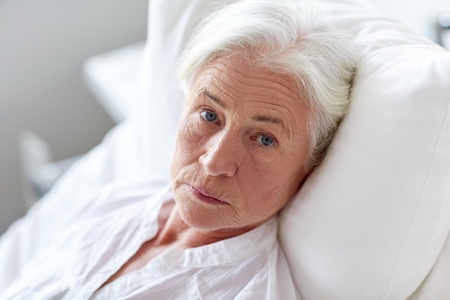How to prevent skin breakdown at home.

Pressure ulcers can happen in every setting. Almost 1/5th of pressure ulcers develop at home. For those who are confined to bed or to a chair for more than one week, the incidence rises. Proper medical attention, nutrition, care and therapeutic medical equipment is essential. Knowledge is one of the most important factors.
Pressure ulcers are not only painful and very difficult to treat but they can be fatal. "Pressure ulceration in elderly patients is associated with a fivefold increase in mortality" (nih.gov).
Preventing bed sores at home is key!
Treating pressure ulcers at home involves:
- Reducing pressure on the affected skin
- Caring for the wounds
- Controlling pain
- Preventing infection
- Maintaining good nutrition
(mayoclinic.com)
Reducing pressure on the affected skin
The first step in preventing a bedsore is reducing the pressure between the sitting or sleeping surface and the skin. This is known as the interface pressure. Strategies include:
- Manual Repositioning. If you use a wheelchair, try shifting your weight every 15 minutes or so and change positions every hour. If you're in a bed, change positions every two hours. However, even in the best of circumstances, this is an inconvenient and often unreliable way to prevent pressure ulcers and depends if you can shift your own weight or rely on care givers. If you have limited ability to shift your weight a powered system is a more appropriate preventative measure.
- Powered Pressure Redistribution Support Surfaces. Use an powered alternating pressure mattress or seating cushion, can be more reliable to protect vulnerable skin. A powered system redistributes pressure evevy 10 minutes without the need for a care giver. Powered systems do not eliminate the need to be occassionally repositioned however, they are a more effective, less intrusive and more reliable method of bed sore prevention.
There are many factors in the formation of bed sores however, for the sleep or sitting surface there are four main factors that a quality powered pressure redistribution mattress, recliner or wheelchair cushion must address:
- Pressure Redistribution - Alternating Pressure Therapy
- Shearing - Low Shear Mattress or Cushion cover
- Friction - Low Friction Mattress or Cushion cover
- Control of moisture - Low Air Loss Therapy
Pressure Redistribution
Pressure between the bony prominences, ie, buttocks, heels, anywhere when the skin over the bone is thin, is more prone to develop ulcers. When seated or in the prone position, the weight of the patient creates pressure between the bone and the support surface aka interface pressure. When this interface pressure gets too high the blood that carriers, oxygen and nurtients to the skin is restricted. Without the proper nutrients, the skin is damaged and can eventually die leading to the pressure ulcers.
One of the most effective ways to prevent pressure ulcers developing at home is with the use of an Alternating Pressure System. As recommended by NIH, some mattress systems combine Alternating Pressure with Low Air Loss therapy. These high quality systems are covered with Low Shear, Low Friction covers to address all four major factors. These cushions or mattresses are made for the bed, wheelchair, recliner and more.
Our recommendation to the most effective, reliable and durable powered cushions and mattresses.
Alternating Pressure Mattress Systems to Prevent pressure ulcers in bed:
Alternating Pressure with Low Air Loss mattress system for people who are less that 225 lbs.
Alternating Pressure with Low Air Loss mattress system for people who are above 225 lbs.
Alternating Pressure Recliner Cushions to Prevent pressure ulcers in a home recliner or lift chair:
Alternating Pressure with Low Air Loss recliner cushion for lazy boy style recliners and lift chairs.
Alternating Pressure Wheelchair Cushions to Prevent pressure ulcers in wheelchairs:
Alternating Pressure Wheeichair cushion.
None of the information above is meant to diagnose or treat any condition. Always refer to your physician when seeking medical advice.

 © 2022 Comforts Best. All Rights Reserved.
© 2022 Comforts Best. All Rights Reserved.